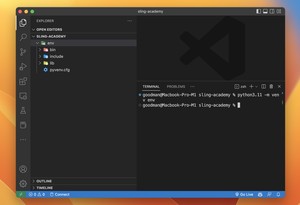When working with Python's requests library, you may encounter the InsecureRequestWarning when making HTTP requests to a server with an expired or self-signed SSL certificate. This warning is an important indicator that your request may not be as secure as expected, but there are scenarios where you might want to suppress it, especially in a development environment or during test cases.
Understanding InsecureRequestWarning
The InsecureRequestWarning is issued by the urllib3 library, which the requests module builds upon. It warns you that your application is making a request to a server without properly verifying its SSL certificate. Skipping this validation step makes your application vulnerable to man-in-the-middle attacks, hence why you're notified.
Suppressing InsecureRequestWarning
If you decide you need to suppress this warning temporarily, you can do it using the warnings library. Here is a simple example of how to suppress the InsecureRequestWarning:
import requests
from urllib3.exceptions import InsecureRequestWarning
import warnings
# Suppress only the InsecureRequestWarning
warnings.simplefilter('ignore', InsecureRequestWarning)
response = requests.get('https://example.com', verify=False)
print(response.text)
This code snippet first imports the necessary libraries and specifically ignores only the InsecureRequestWarning using warnings.simplefilter. The verify=False parameter in the requests.get() call tells the requests library to perform the GET request without verifying the SSL certificate.
Setting Certificates
If you don’t want to disable SSL certificate verification globally, the best practice is to provide the path to a CA_BUNDLE file or directory with certificates of trusted CAs:
import requests
# Specify the path to the certificate
response = requests.get('https://example.com', verify='/path/to/certfile.pem')
print(response.text)
This code will check the SSL certificate against the file specified. You won't receive a warning if the certificate is valid.
Python's HTTP Adapters
Another advanced yet useful technique for handling secure connections is customizing HTTP adapters in the requests library:
import requests
from requests.adapters import HTTPAdapter
from requests.packages.urllib3.util.ssl_ import create_urllib3_context
class MyAdapter(HTTPAdapter):
def __init__(self, ssl_context=None, **kwargs):
self.context = ssl_context if ssl_context else create_urllib3_context()
super().__init__(**kwargs)
def init_poolmanager(self, *args, **kwargs):
kwargs['ssl_context'] = self.context
return super().init_poolmanager(*args, **kwargs)
def main():
session = requests.Session()
adapter = MyAdapter()
session.mount('https://', adapter)
response = session.get('https://example.com')
print(response)
if __name__ == '__main__':
main()
In this example, we define a custom adapter class MyAdapter that allows overriding the SSL context settings.
Conclusion
Dealing with the InsecureRequestWarning either by suppressing it or ensuring proper certificate validation should depend on the context. For production systems, always prefer verifying the SSL certificates. However, while developing or troubleshooting, you may want to suppress these warnings temporarily. Always ensure that any lowered security standards in development are not present in production environments to guard against potential threats.











